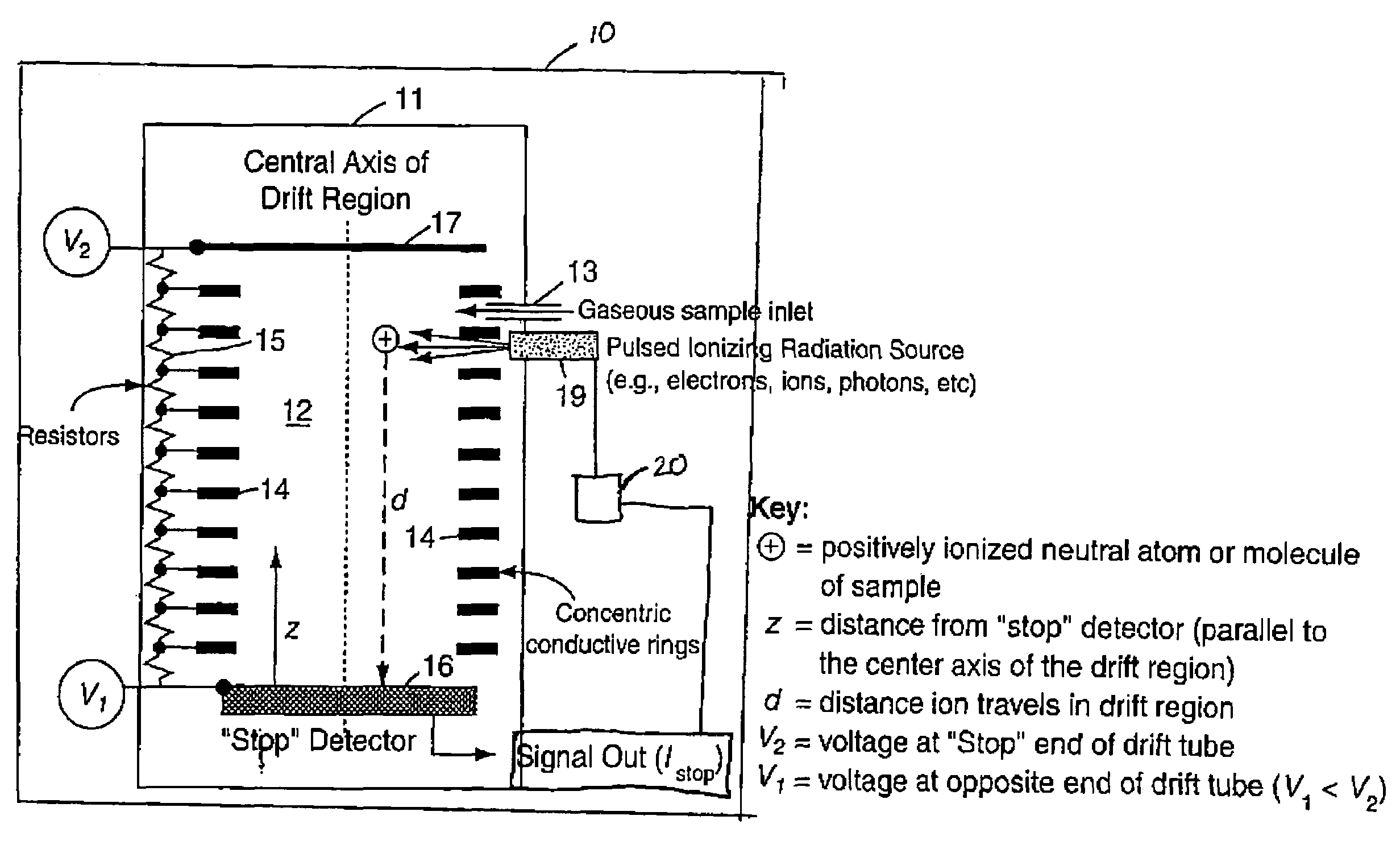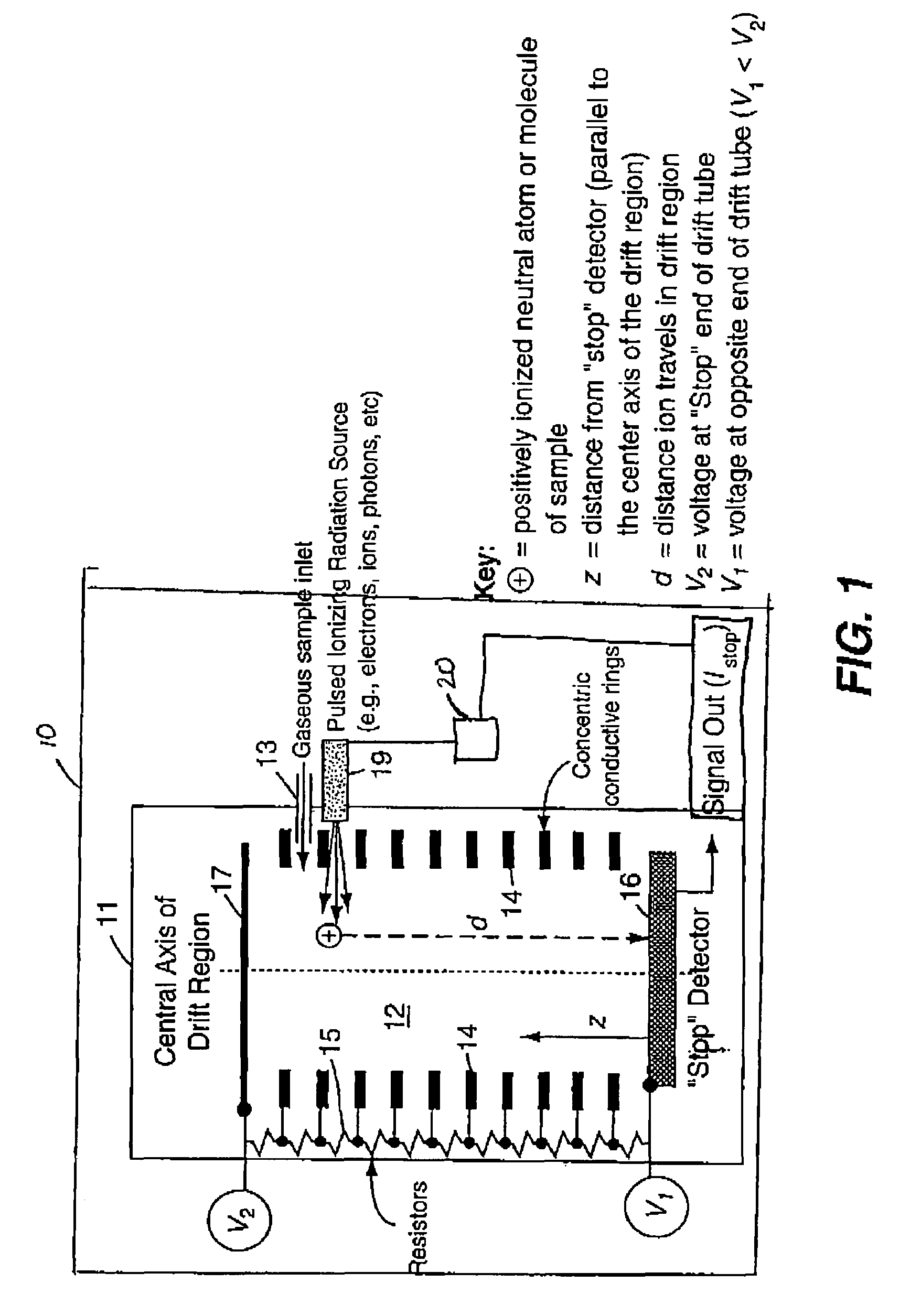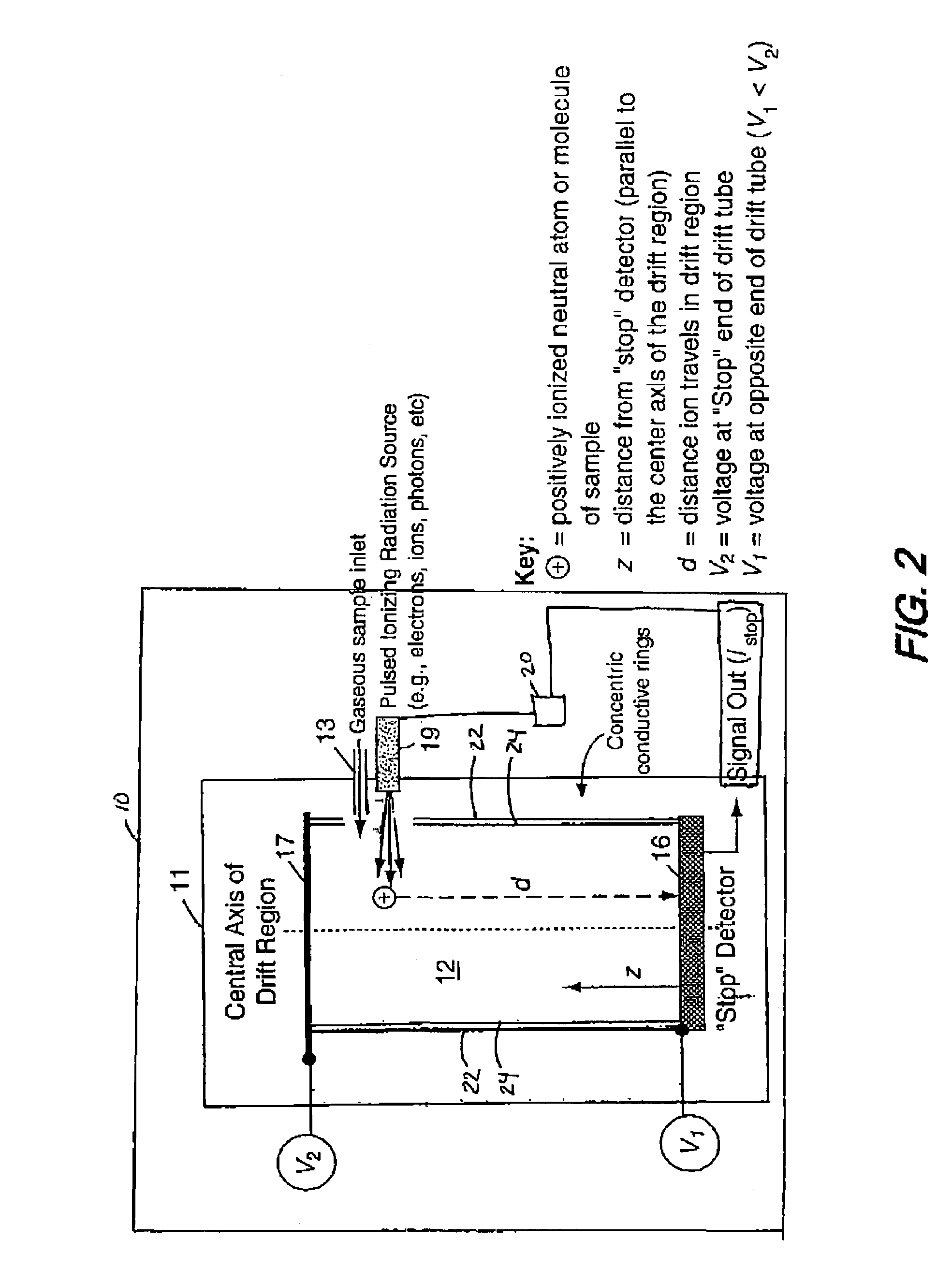Linear electric field time-of-flight ion mass spectrometer
a time-of-flight ion and mass spectrometer technology, applied in the field of mass spectrometers, can solve the problems of limiting the use of mass spectrometers to a narrow mass range, high mass of magnets and the time required to scan the entire mass range one mass, and poor spatial resolution it provides
- Summary
- Abstract
- Description
- Claims
- Application Information
AI Technical Summary
Benefits of technology
Problems solved by technology
Method used
Image
Examples
Embodiment Construction
[0021]The present invention ionizes a sample atom or molecule within a drift region having a linear electric field. The electric field accelerates the ions toward a detector, such that the time-of-flight of an ion, from the time of its ionization to the time of its detection, is independent of the distance the ion travels in the drift region. The invention provides high mass resolving power, smaller resource requirements in such areas as mass, power, volume, and pumping capacity, and elimination of the prior art requirement that the location of an ion at time t1 must be known in order to measure its time-of-flight in the drift region. The invention can be understood more easily through reference to the drawing.
[0022]Referring to FIG. 1, there can be seen the time-of-flight mass spectrometer 10 of the present invention resides inside evacuated chamber 11. The gaseous sample to be investigated is introduced into drift region 12 by sample inlet 13, where the sample is a gas . Alternati...
PUM
 Login to View More
Login to View More Abstract
Description
Claims
Application Information
 Login to View More
Login to View More - R&D
- Intellectual Property
- Life Sciences
- Materials
- Tech Scout
- Unparalleled Data Quality
- Higher Quality Content
- 60% Fewer Hallucinations
Browse by: Latest US Patents, China's latest patents, Technical Efficacy Thesaurus, Application Domain, Technology Topic, Popular Technical Reports.
© 2025 PatSnap. All rights reserved.Legal|Privacy policy|Modern Slavery Act Transparency Statement|Sitemap|About US| Contact US: help@patsnap.com



